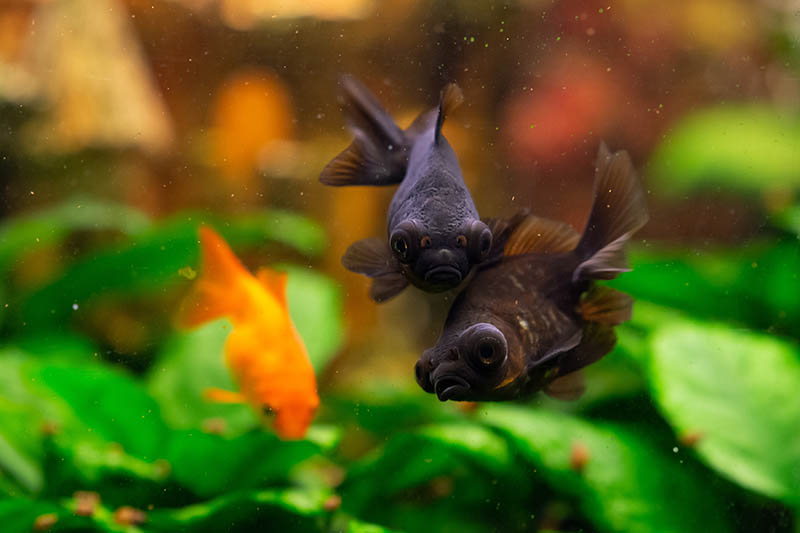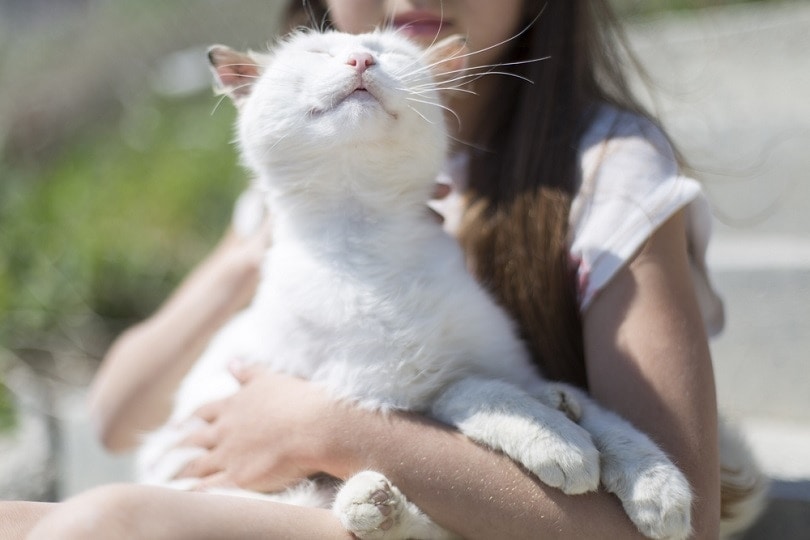How to Hold a Guinea Pig Safely & Properly: 7 Expert Tips
Updated on
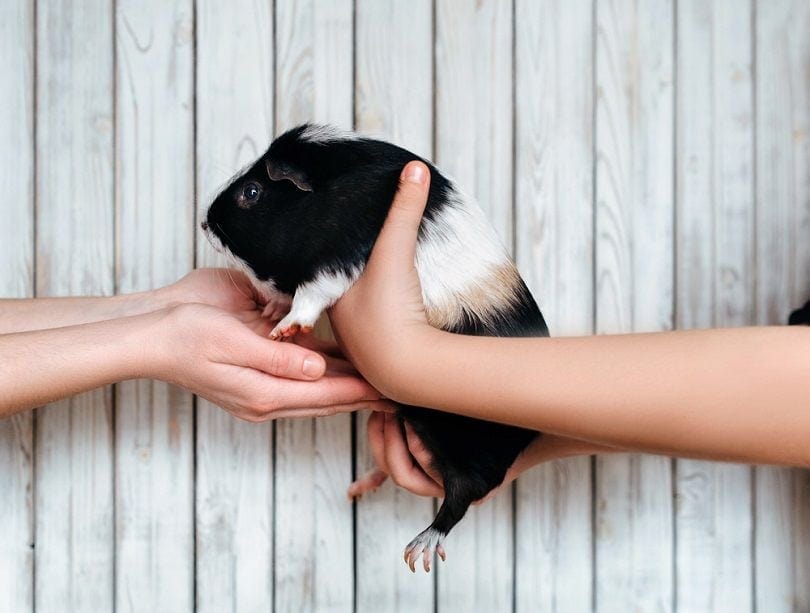
Guinea pigs are small, popular pets known for their social nature and cute appearance. But picking them up can be tricky. If not done correctly, it can cause them to become scared or even injured. So, knowing how to hold a guinea pig safely is essential.
Luckily, we have seven expert tips on how to hold a guinea pig. We’ll include how to approach them, the correct way to pick them up, and how to hold them securely.
By following our seven expert tips, you can ensure that you and your guinea pig have a positive and safe interaction.
The 7 Tips How to Hold a Guinea Pig Safely & Properly
1. Approach Them Slowly
Guinea pigs are skittish and can easily become frightened. That’s especially true if they are not used to being held. That’s why it’s essential to approach your guinea pig slowly so as not to startle them.
Start by spending time near your guinea pig’s cage, talking softly, and offering treats. This will help your guinea pig get used to your presence and associate you with positivity. Once your guinea pig seems comfortable, you can introduce the idea of picking them up.
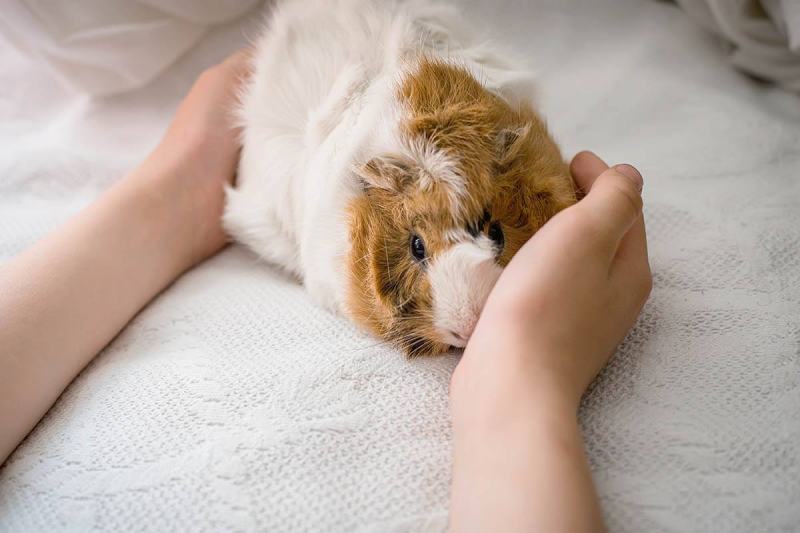
2. Support Their Hindquarters
When picking up a guinea pig, support their weight properly and scoop them up rather than grabbing them from above. Guinea pigs can get frightened and feel like they’re falling, causing them to wriggle or to escape.
Place one hand under the chest, with your thumb and forefinger supporting its front legs. Use your other hand to support your guinea pig’s hindquarters, ensuring you have a firm but gentle grip.
Scoop your guinea pig slowly, lifting them towards your body. Keep it close to your chest to provide security and comfort. Keep a firm but gentle grip, being careful not to squeeze your guinea pig.
3. Hold Them Close
Hold them securely once you’ve picked up your guinea pig to ensure it feels safe in your arms. One of the most straightforward ways to do this is to hold your guinea pig close to your body, with their head resting on your arm.
Cradle your guinea pig in your arms, holding them against your chest. Use one arm to support its hindquarters while the other supports its chest and front legs.
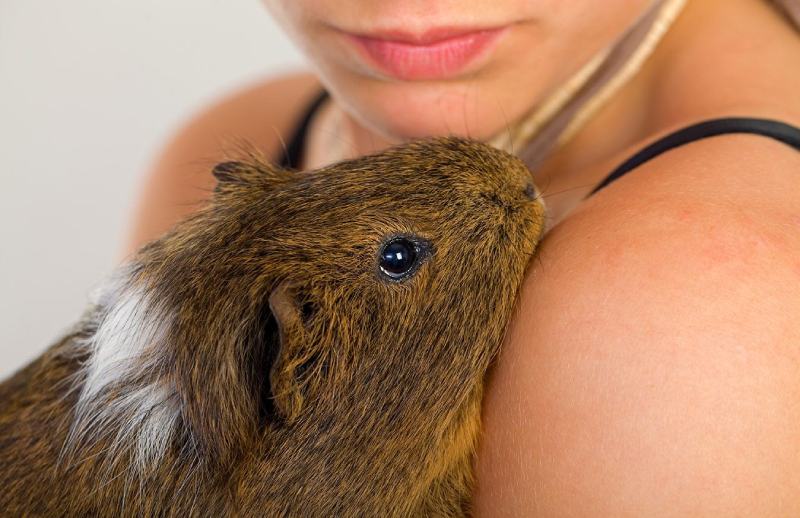
4. Keep a Firm Grip
When holding a guinea pig, it’s important to strike a balance between holding them firmly and gently. While you want to ensure your guinea pig feels secure in your arms, you must also be careful not to squeeze them. Make sure not to put pressure on its delicate bones.
Guinea pigs have delicate bones and can get injured if held with too much pressure. This is especially true for young guinea pigs or those with weakened bones or joints.
5. Never Pick Them Up by Their Legs, Tail, or Ears
It’s important to always handle guinea pigs carefully and never pick them up by their legs, tail, or ears. Guinea pigs have delicate bones and muscles. Picking them up incorrectly can cause serious harm or injury.
Picking up a guinea pig by the legs or tail can cause the animal to panic and struggle. This may result in injury to the spine or legs. Similarly, picking up a guinea pig by the ears can cause pain or injury to its delicate ear structures.
If you need to move your guinea pig, place your hand under its chest and the other on the hindquarters. This allows you to lift your guinea pig without undue pressure on its body or delicate bones.
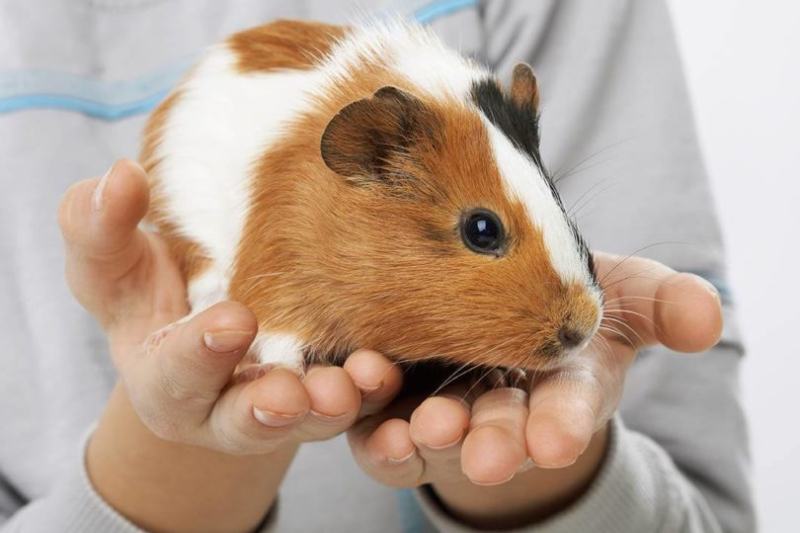
6. Use a Reassuring Tone
Guinea pigs are social animals that respond well to human interaction. When holding your guinea pig, speak to them calmly and reassuringly to help them feel more at ease in your arms.
Avoid sudden movements or loud noises because these can startle your pet. Instead, speak softly and move slowly to help your guinea pig feel relaxed.
7. Keep a Close Eye
Holding your guinea pig can be a wonderful way to bond with your pet. But watching your pet closely and knowing its body language is important. If your guinea pig begins to squirm or struggle, it may be a sign that they want to be put back down.
Guinea pigs are prey animals, so they are naturally wary of being picked up. While many guinea pigs enjoy cuddling, others may feel frightened or uncomfortable.
If your guinea pig begins to squirm, struggle, or show signs of distress, place them back in their cage or on the ground. This will help your pet feel safe and secure and prevent injuries or accidents.
It’s also important to never force your guinea pig to be held if it doesn’t want to be. If your pet seems skittish or uncomfortable, give them some space and try again later when they feel more comfortable.
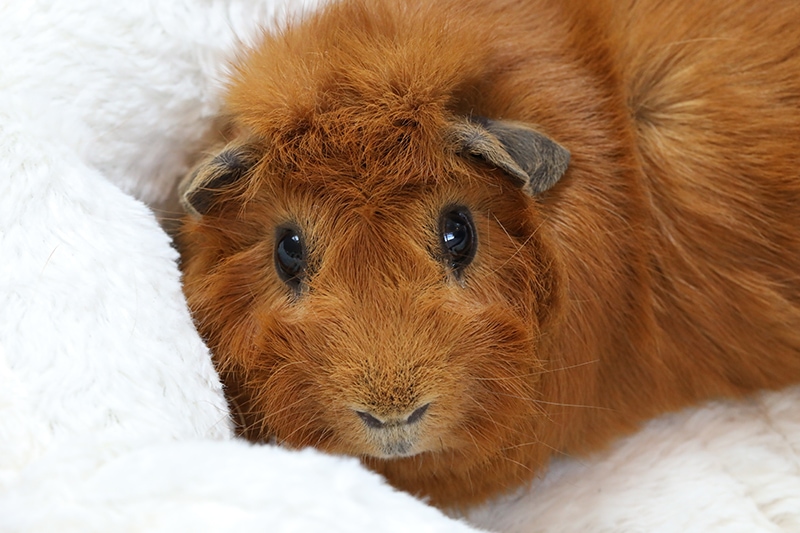
Conclusion
Holding a guinea pig can be a delightful experience if done correctly. Guinea pigs are delicate, so you must approach them with care and respect.
By following the expert tips, you can safely hold your guinea pig and give them the affection they need. Remember to be gentle, keep a firm grip, and support your guinea pig’s weight while holding them.
With these tips, you and your guinea pig can enjoy a positive and loving bond.
See Also:
- How to Introduce Guinea Pigs: 6 Effective & Safe Methods
- Are Guinea Pigs Hypoallergenic? Facts & Tips to Reduce Symptoms
Featured Image Credit: Shschus, Shutterstock







